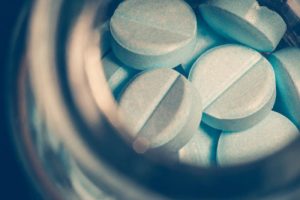The U.S. is in the midst of an opioid abuse and overdose epidemic. Maryland has been hit particularly hard by the issue.
Opioid Abuse Across the Country
According to the U.S. Centers for Disease Control and Prevention (CDC), there was an increase in the prescribing rate of opioid medications that peaked in 2012. Then, prescription rates declined from 2012 to 2017.
The full national data for 2018 will not be available until later in 2019, but in 2017, the prescription rate of opioids declined to the lowest level it had been in 10 years in the U.S. Nonetheless, there are several areas of the country that still have relatively high rates of opioid prescriptions and overdose-related deaths when compared to the rest of the country as a whole.
While the rate of opioid overdose deaths increased in 2017, prescription opioids were involved in only about 35 percent of all opioid overdose deaths. About 65 percent were the result of illicit opioids, such as heroin or fentanyl.
The most common drugs involved in prescription opioid overdose deaths, according to the CDC are:
- Methadone
- Oxycodone (the opioid in OxyContin and some other medications)
- Hydrocodone (the opioid medication in Vicodin, Norco, and other opioid medications)
The data indicate that the general patterns of opioid use, misuse, and overdose deaths in Maryland were similar to the trends observed in the national data. Thus, the opioid epidemic in Maryland shares similarities with the national opioid epidemic.
Opioid-Related Overdose Deaths in Maryland
According to the National Institute on Drug Abuse (NIDA), rates of opioid-related overdose deaths in Maryland have consistently been above the national average since 1999. It has ranged from 1.5 to three times the national average.
In 2016, there were nearly 30 deaths per 1,000 individuals due to opioid overdose in Maryland; the national rate at the time was 13.3 deaths per 100,000.
In 2016, about 650 of the 1,821 deaths were due to overdoses on the synthetic opioid fentanyl, which is often mixed with heroin. About 650 deaths in 2016 were related to heroin overdose.
Maryland prescribers have been decreasing their rates of prescriptions for opioids — 65.6 prescriptions per 100 persons in 2015, which represents a 7.3 percent decline since 2012. This is lower than the national rate of 70 prescriptions per 100 persons.
The Baltimore Sun recently reported that 6,139 Marylanders died of opioid-related overdoses from 2015 until June 2018, a significant increase from rates in past periods.
Efforts to Address the Epidemic
Increased Use of Illegal Opioids
The increase in opioid overdose deaths is a perplexing issue across all states and certainly a major issue in Maryland. Governmental officials have expressed concern over the rise in opioid overdose deaths, but they have rarely commented on the relationship between decreasing prescription rates and increasing overdose deaths, which points to a more serious issue.
The increase in opioid-related deaths seen recently in Maryland is not because of an increase in prescription opioid overdoses. This signifies an increase in the consumption of illegal opioids.
Even data presented by the state of Maryland clearly indicate that the death rate associated with prescription opioids has remained stable from 2007 to 2017, but the rise in opioid overdose deaths associated with fentanyl and heroin has seen a sharp increase since 2012. This is right around the time rates for opioid prescriptions began to decline nationally. Fentanyl overdoses often occur in conjunction with heroin use.
Prevention and Treatment Goals
The primary goals for state officials include prevention, education, and an understanding that illicit opiates like heroin are involved in more opiate overdose deaths than prescription opiates.

Increases in funding are helpful to finance programs to combat substance abuse. For instance, the Before It’s Too Late program is the state’s effort to mobilize resources for prevention, recovery, and treatment, and to bring awareness to the public regarding substance abuse.
According to most sources, the significant focus on prevention, treatment, and recovery should continue. Some believe there should be a particular focus on particularly dangerous drugs like heroin and fentanyl.
Legitimate Use
The data suggest that the rates of people with opioid medication prescriptions should no longer be considered a significant factor associated with misuse of opiates, nor with the ever-increasing rate of opioid-related deaths in the state of Maryland.
While it is certainly true that prescription rates for opiates are related to the availability of opiates for misuse, data from the Substance Abuse and Mental Health Services Administration (SAMHSA) and NIDA consistently finds that the majority of people who are prescribed opiate medications do not misuse or abuse them.
The figure ranges from 10 percent to 20 percent for individuals with prescriptions who engage in the misuse of opiates. The figures for individuals who are prescribed opiates and later develop opiate use disorders are significantly lower.
While the vast majority of individuals who are prescribed opioids do not misuse them, the majority of individuals who regularly use heroin began by using prescription opiates, either with a prescription or by getting them illegally.
Based on the overall data, prescription opioids aren’t the only problem in Maryland. Efforts need to be aimed at abuse of illegal opioids, such as heroin, as well.
The Future
Maryland continues to develop and hone efforts to address the opiate epidemic within its borders. While the state still struggles with high rates of opiate overdose, certain prevention and treatment efforts are showing positive effects.